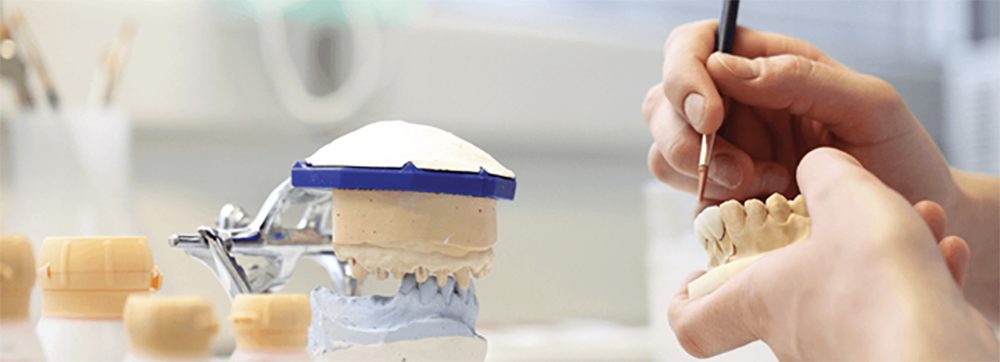Dental Laboratories

A digital workflow forms an integral part of any dental laboratory’s manufacturing process.
It is used to integrate the CAD design process, CNC milling of restorations and 3D printing, speeding up productivity and enabling more accurate outcomes in a fraction of the time.
At Dental CAD Solutions we partner with dental laboratories, helping them migrate from traditional working methods to partial or full digital workflows by providing them with a highly integrated ‘open’ digital solution.
We assist in the design of the workflow process to meets your goals and budget, provide installation and training as well as around-the-clock customer support.
We will pull all the parts of the workflow process together for you.
The benefits of a digital workflow for dental laboratories
- Allows dental labs to receive information in digital form when previously information was supplied as impressions with case notes and instructions. Often the case information was delayed, damaged or lost in transport.
- Allows for greater accuracy of the final product and avoids having to retake impressions.
- Use of digital techniques is a more accurate presentation of the case to the dental lab and simplifies the manufacturing the restoration.
- Using digital data allows for easy use of 3D printing and milling. It also helps in manufacturing surgical guides.
Our equipment and software solutions for dental laboratories
A dental lab scanner is an essential tool in today’s laboratories. It is used for accurate scanning of dental models, alginate impressions and dentures given that dental laboratories do not always receive cases in a complete digital format. When working on complex full-arch implant cases, the lab scanner is the preferred method as it is the most accurate method of scanning.
3D printers are essential in the modern dental laboratory. Currently these printers are used for printing models for casting metal crowns, partial dentures and full dentures. An important application of 3D printers is printing dental models from intra oral scanners. This eliminates the messy process of casting models from alginate impressions.
3D printing is also used for many other applications like splints, orthodontics and surgical guides.
CNC Milling is the preferred process for producing crowns and bridges in zirconia, lithium disilicate and metals. It is very accurate, fast and produces an excellent finish. Regardless of whether you are looking for a solution for dry milling of zirconia materials or wet milling of high-aesthetic glass ceramics and composites, a milling machine will help you produce stunning restorations as part of a digital workflow. You can produce everything from single unit restorations to full arch implants or dentures with high accuracy and quality.
Leading dental design software, Exocad, has the capability to design crowns, bridges and implants. It is also capable of planning and designing surgical guides, partial and full dentures, dental models and a lot more. You can also integrate Smile Design into Exocad design software. Exocad is known for its flexible design concept, robustness and ease of use, even for very complex cases.
Smile design technology, Smile Creator, enables dental labs and dentists to secure a digital preview of the proposed treatment outcome and reliably assess prosthetic feasibility even during the aesthetic planning process.
